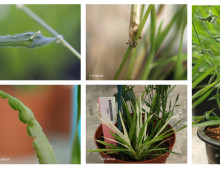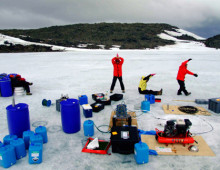Indexed collection of Brachy mutants
Herbaceous energy crops, especially grasses like switchgrass and Miscanthus, are poised to become a major source of energy in the United States. Because of their efficient water use and productivity, it is anticipated that the majority of the 377 million tons of biomass projected to be produced by energy crops will come from perennial grasses… [Read More]

